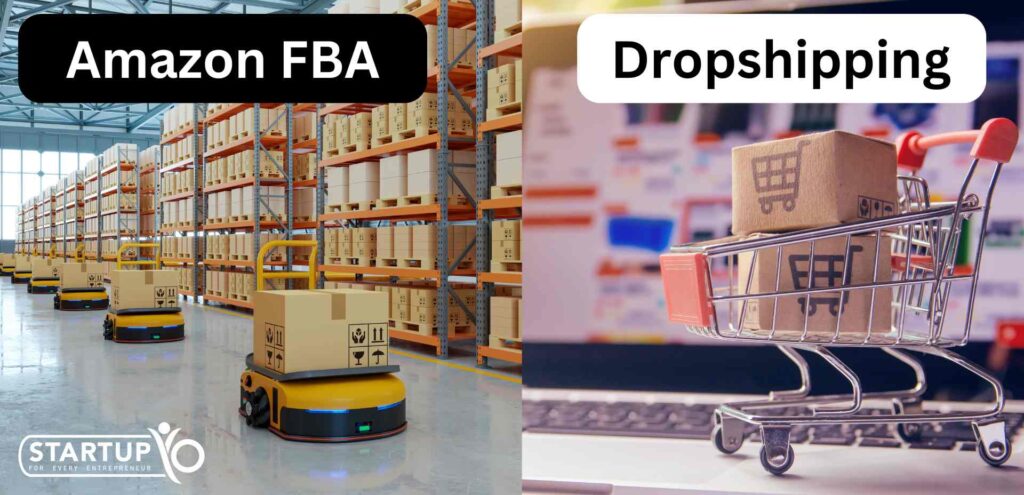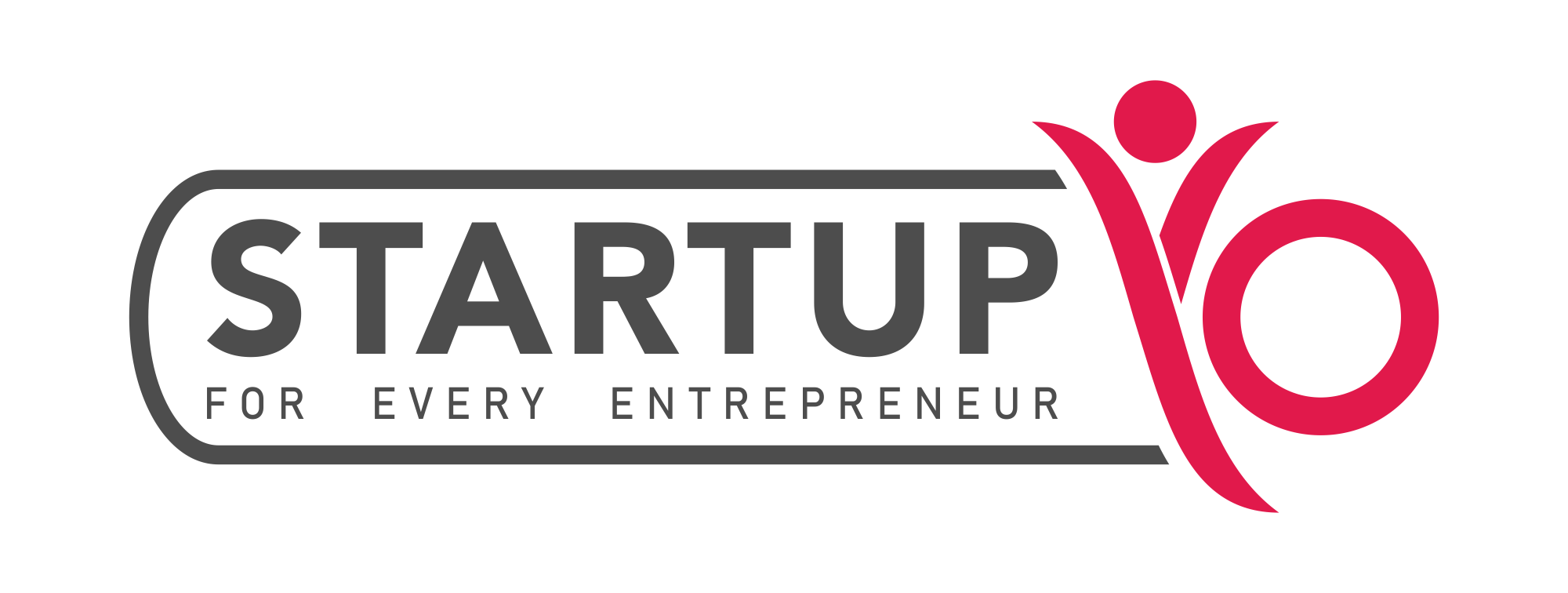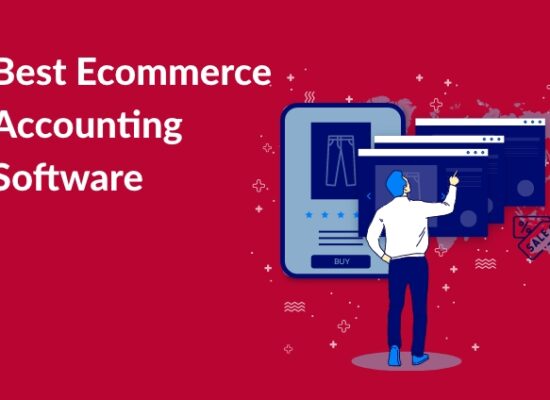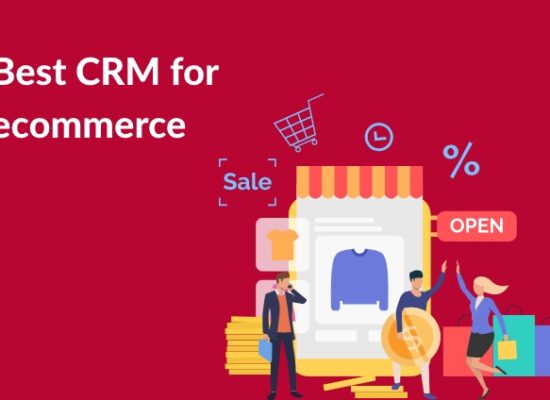
Have you ever dreamed of launching your own online business but got stuck at the crossroads of Amazon FBA and dropshipping? Don’t worry; you’re not alone in this e-commerce dilemma! Join us on a journey as we unravel the mysteries, perks, and pitfalls of Amazon FBA vs dropshipping.
The purpose of this article is to give aspiring business owners a clear comparison. Readers can choose the model that most closely resembles their goals. Watch this space to find out which route best suits your aspirations for entrepreneurship.
Amazon FBA vs Dropshipping : The two Prominent Methods for Online Sellers
Online retailers often use Fulfilment by Amazon (FBA) as a means of streamlining their operations. Sellers who use Fulfilment by Amazon (FBA) ship their goods to Amazon’s warehouses and Amazon takes care of the packaging, shipping, and storage. This gives you the freedom to concentrate on other facets of your company such as product development and marketing.
If you’re selling handmade jewelry. You choose to use FBA rather than handling inventory and shipping on your own. You ship goods to Amazon and they handle all the ordering when a buyer placed an order. You now have more time to develop new designs and market your business.
Conversely, dropshipping is the practice of selling goods without maintaining any inventory. You buy the item from a third party and ship it straight to the client when a buyer places an order. With this business strategy, retailers may offer a large selection of products without having to worry about maintaining inventory and it also demands a small initial investment.
In case you manage an electronics business. Rather than keeping inventory on hand, you collaborate with suppliers that ship goods straight to clients. The supplier receives the order for a smartphone purchased from your store and the supplier ships the phone to the customer’s address. You make money even though you never physically touch the product.
The decision between dropshipping and FBA is based on various criteria including the seller’s preferences, the size of the business, and the characteristics of the products. Both provide distinct benefits and obstacles.
Read More : Affiliate Marketing Vs Dropshipping
Understanding Amazon FBA
Fulfilment by Amazon is what’s known as Amazon FBA. Sellers can use Amazon’s fulfilment centers to store their products as part of this service. On behalf of the suppliers, Amazon selects, packages, and ships the items to the customers after orders are placed.
Assume you run a small company and offer handcrafted candles. You choose to use Amazon FBA rather than handling the logistics of storage and shipment yourself. You ship the candles from your inventory to Amazon’s fulfilment facility. Everything is taken care of by Amazon starting when a customer orders your candles from their website. They find the candles in their warehouse, safely package them, and use their effective delivery network to send them to the consumer.
You are relieved of customer service, return, and refund duties as Amazon takes care of these things as well. Furthermore, your products become eligible for Amazon Prime, which can draw in more clients because of the advantages of quick and free shipment. In this case, Amazon FBA handles the operational facets of order fulfilment, freeing you to concentrate on producing high-quality goods and expanding your company.
The Pros and Cons of Amazon FBA
| Pros | Cons |
| Using FBA to begin selling on Amazon is a very simple process. | The storage, fulfilment, and referral fees associated with FBA can significantly reduce your profits. |
| Amazon saves your time and frees you from stress by taking care of shipping, packing, and storage. | You give Amazon control over the shipping and handling procedures. |
| By handling returns and customer questions, Amazon improves customer satisfaction. | With millions of sellers on Amazon, there can be intense rivalry which makes it more difficult to stand out. |
| Your goods can benefit from Amazon Prime by raising their profile and possibly boosts sales. | It might be difficult to maintain an appropriate level of inventory which could result in stock outs or excessive inventory costs. |
| You can increase your market reach by gaining access to Amazon’s enormous global client base. | Account suspension may result from breaking Amazon’s rules or from getting unfavorable reviews. |
Read More : Print on Demand vs. Dropshipping
Decoding Dropshipping
Using dropshipping, a retail fulfilment technique, the seller does not own inventory for the products they sell. Rather, when a product is offered, the seller gets it straight from a third party and ships it straight to the buyer.
Let’s say you wish to launch an electronics website. But you lack the funds to buy the product up front and the storage room to keep it. You choose to give dropshipping a try. You launch an online business and collaborate with an electronics provider. You send your supplier an order for a laptop that a customer placed on your website along with the customer’s shipping information.
After that, the laptop is shipped straight to the consumer by your provider. As the retailer, you never physically see or handle the merchandise. Rather, you make money by charging more for the laptop than you are getting from your supplier.
The main benefits of dropshipping are flexibility and inexpensive startup costs. It is a compelling choice for anyone wishing to enter the e-commerce industry because it enables business owners to launch an online store with little initial outlay of funds.
The Pros and Cons of Dropshipping
| Pros | Cons |
| Starting costs are minimised because you don’t have to pay for inventory up front. | Compared to typical retail models, profit margins may be lower because you’re not purchasing goods in bulk. |
| You can operate your company freely and flexibly from any location with an internet connection. | Negative reviews and consumer unhappiness might result from shipping mistakes or delays. |
| You don’t need a lot of storage space if you offer a large range of products. | You depend on your suppliers, who occasionally exhibit unreliability to fulfil orders on schedule and maintain quality. |
| There aren’t many overhead expenses because there isn’t any inventory or need for a warehouse. | Since the product is supplied straight from the source, you don’t have control over branding, packaging, and customer experience. |
| You don’t have to worry about controlling inventory levels, so scaling up your firm is very simple. | Due to the low entry barrier, there is intense competition and pricing pressure. |
Read More : 9 Best Ecommerce Business Ideas
Head-to-Head Comparison
Dropshipping and Amazon FBA (Fulfilment by Amazon) are two well-liked e-commerce business strategies, however they differ greatly from one another.
| Amazon FBA | Dropshipping | |
| Management of Inventory | Sending your products to Amazon’s warehouses for storage, packing, and shipping is what FBA involves. | With dropshipping, the supplier ships goods straight to the buyer, so you don’t have inventory. |
| Product Control | You are in charge of what you send to Amazon, so FBA allows you greater control over your inventory quality. | Dropshipping depends on suppliers for shipping and stock availability which occasionally causes problems with quality assurance and delivery schedules. |
| Initial Expenses | You must have your own goods in order to be sent to Amazon, so FBA may demand a larger upfront expenditure. | Dropshipping eliminates the requirement for upfront product purchases, so it usually has reduced upfront expenditures. |
| Profit Margin | If you can identify products with strong demand and little competition, FBA can provide larger profit margins. | Dropshipping frequently has smaller profit margins due to heightened competition and lowered entry barriers. |
| Capability to Scale | As your business expands, FBA can need additional logistical and inventory control management. | Dropshipping eliminates the need for inventory management, so it may be simpler to grow. |
| Management of Brands | Since you handle packaging and labelling with FBA, you have more control over branding and the customer experience. | The supplier frequently takes care of packaging and delivery, so dropshipping may give you less control over branding. |
Real-life case studies
Amazon FBA Case Study – Jungle Stix
The company Jungle Stix offers bamboo marshmallow sticks that are biodegradable and environmentally friendly. They used Amazon FBA to manage product delivery, packaging, and storage. Jungle Stix was able to grow their business quickly without having to worry about logistics by using FBA. They were able to concentrate on marketing, customer service, and product development as a result which increased their sales and brand recognition significantly.
Dropshipping Case Study – Warmly
Warmly is a dropshipping company that sells goods for the home and lifestyle. Warmly was established by a group of business owners who were passionate about designing warm and welcoming environments. They immediately became well-known by providing a chosen range of premium goods at affordable costs. Consequently, the business grew quickly and became successful, proving that dropshipping can be successful when done right.
Read More : 7 Best Ecommerce Automation Tools
Factors Influencing the Choice
| Amazon FBA | Dropshipping | |
| Investment | High | Low |
| Risk | High | Low |
| Customer Base | Higher | Small |
| Customization | Yes | No |
| Shipping | Low risk | High risk |
| Profit Margin | High | Low |
Bottom Line
Dropshipping and Amazon FBA both present distinctive chances for would-be business owners, yet they both have pros and cons of their own. By taking care of inventory storage, packaging, and shipping, Amazon FBA makes it convenient for sellers to concentrate on growing their business rather than worrying about logistics. However, there is a lot of competition on the platform and significant upfront expenditures and fees are linked with FBA.
Conversely, dropshipping presents a low entrance barrier because it necessitates a small initial inventory commitment. This enables business owners to try a variety of goods and market areas with comparatively little risk. Dropshipping does however, present certain drawbacks including increased shipping costs, reduced profit margins, and certain problems with product quality and customer satisfaction.
Dropshipping vs. Amazon FBA ultimately comes down to a number of considerations including financial constraints, risk tolerance, time commitment, and long-term objectives. A blend of the two approaches is frequently used by successful sellers, or they may change course in response to opportunities and market changes. Whatever strategy is selected, ongoing adaptation, strategic planning, and in-depth research are necessary for long-term success in the dynamic world of e-commerce.
FAQ’s
Which model’s profit margins are higher?
Dropshipping faces more competition and less obstacles to entrance, so its profit margins may generally be lower. Amazon FBA sellers who maximize their operational effectiveness and product selection may be able to increase their profit margins.
Which model has better shipping?
Given that Amazon has a large network of fulfilment centers and can deliver goods to clients more quickly, Amazon FBA typically offers speedier shipping times. Dropshipping products can have lengthier shipping delays because they are frequently sourced from suppliers abroad.
Which model gives you more control over the quality of the product?
Sellers who use Amazon FBA have greater control over the quality of their products because they may check and ship their inventory straight to Amazon’s fulfilment centers. Since dropshippers depend on outside suppliers to fulfil orders, maintaining product quality might be more difficult.
Which model is more appropriate for newbies?
Depending on their tastes and financial situation, beginners may find both dropshipping and Amazon FBA to be advantageous. Dropshipping’s cheaper upfront expenses and easier logistics make it a popular choice among beginners. But one benefit of using Amazon FBA is that you can take advantage of their extensive infrastructure and consumer base.
Which model has greater long-term sustainability?
If done well, dropshipping and Amazon FBA can both be long-term business models. But in order to stay ahead of the competition, you have to constantly adjust and improve your business to meet changing needs from clients and the market.



